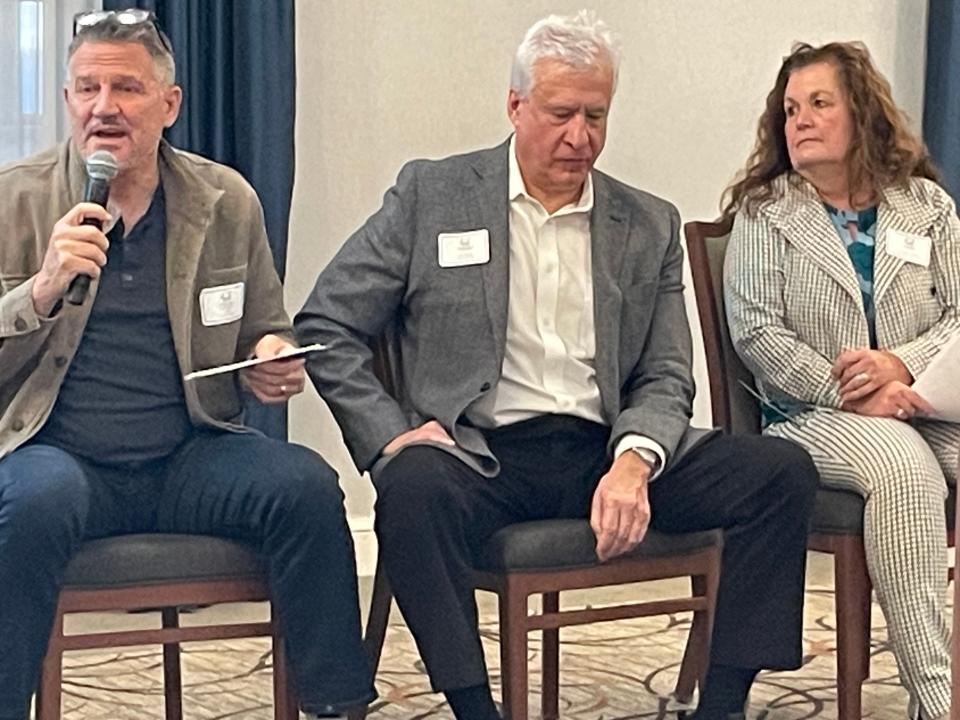Why affordable housing is essential to southeastern CT's economy and growth
Issues impacting the economy of southeastern Connecticut, including affordable housing, diversity, and the need to develop resources were discussed a panel at seCTer’s Board of Directors meeting Wednesday.
Norwich Community Development Corporation President Kevin Brown, Windham Economic and Community Development Director Jim Bellano, and Preston First Selectwoman Sandra Allyn-Gauthier spoke about how the issues impacted their towns and the region.
Affordable housing
Last year, Connecticut required that towns create a plan of how to get more affordable housing in their town. While some areas, like Windham and Norwich, already exceeded the 10% requirement, Preston is behind at 4%, according to Allyn-Gauthier.
As Preston is a rural area, there are challenges in getting enough affordable housing in town. Residents supported affordable housing for first-time home buyers and the elderly, and the town was able to create new zoning for this purpose. However, practical issues remain, like sufficient access to sewer and water utilities, Allyn-Gauthier said.
Public transit access can also limit affordable housing, especially in rural communities, Bellano said.
Since Norwich and Windham have enough affordable housing to meet state requirements, those communities are less concerned about quantity of that housing, as they are the quality. In Windham, there are many outdated units considered affordable housing by the state’s standards. Perhaps by eminent domain or another way, it may be possible to take the some of the existing affordable housing stock and make them more modern, Bellano said.

Looking into flexible zoning can help towns adapt to create more affordable housing, Brown said.
Housing is one part of a larger economic strategy
Addressing housing and other factors plays into a larger economic strategy for the region. Brown emphasized the cross-sector interaction between urban, rural, defense, hospitality and maritime. There needs to be synergy between them, and other parts of the region’s economy, like the planned Business Park North intending to provide jobs for the whole region, he said.
“Always find ways to lift the other party,” he said.
The development of the Preston Riverwalk, to be in part built on the site of the former Norwich Hospital, will also help with the region’s economic goals. The space will be mixed use, with entertainment, retail and office space. With property cleanup to finish this winter and conveyance by the end of 2024, the Riverwalk is expected to receive $200 to $600 million in investment in a three-to-five-year period, and create at least 200 permanent jobs, Allyn-Gauthier said.
“It’s very important, not only to Preston but to our region, with a focus on high-quality, sustainable jobs,” she said.
The Preston Redevelopment Agency and The Mohegan Tribe have played pivotal roles in this development, Allyn-Gauthier said.
“It takes a village, and we are all individual pieces of fabric woven into a beautiful quilt,” she said.
Diversity issues
Two forms of diversity are also vital for the region: diversity of people, and diversity in the economy. For people, Norwich has Global City Norwich, led by Bobbie Braboy. Her family has long been active in the NAACP Norwich Branch, so she’s seen by the community as a trusted messenger. Global City itself provides a means for Norwich to reach out to diverse populations and give them access to employment and business opportunities, Brown said.
In Windham, the Latino population is 40% and about 45% in Willimantic. However, that community hadn’t been active in Windham’s government, and it seemed the town wasn’t doing much to reach out to them. Now the town’s advertising and marketing for tourism focuses on the Latino community, as well as outreach to consider opportunities in trades, Bellano said.
Preston may only have a 14% people of color population, but the town is getting more diverse. The town wants to engage people on various metrics, as listed in the 2023 CT DataHaven report on the town, and figure out what needs are present, Allyn-Gauthier said.
Regarding economic diversity, the pandemic still in the back of people’s minds. The area needs a diverse economy to create more economic resilience all around. People in economic development need to think regionally and go outside of their comfort zones to create that resilience, Bellano said.
Agriculture has received a lot of support in Preston. Traditionally a farming community, Preston has recently created new tax breaks for farm equipment and teamed up with North Stonington, Griswold, Voluntown and Sterling to create the “farm five.” There was a regional event where they partnered with seCTer and various state and federal organizations to see how agriculture can be supported and promoted, Allyn-Gauthier said.
This article originally appeared on The Bulletin: Big developments can have big impact on eastern CT economy

